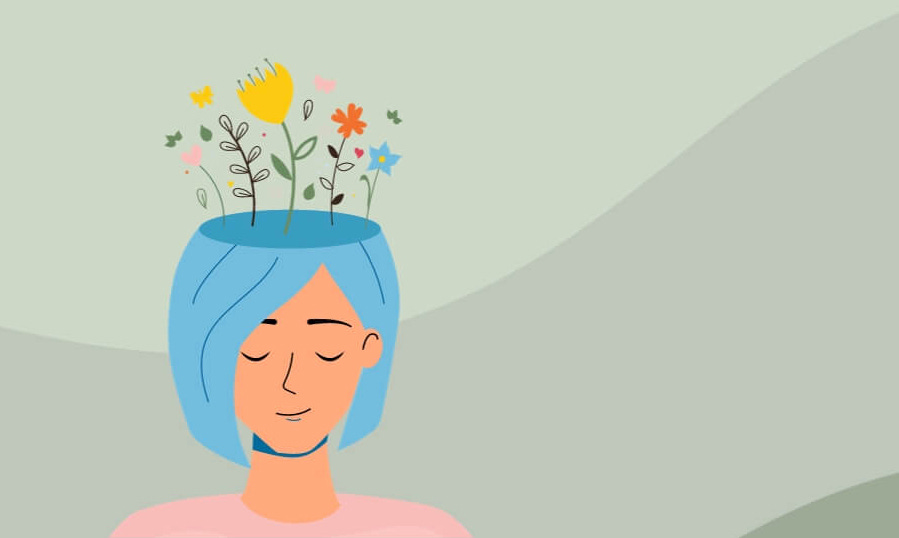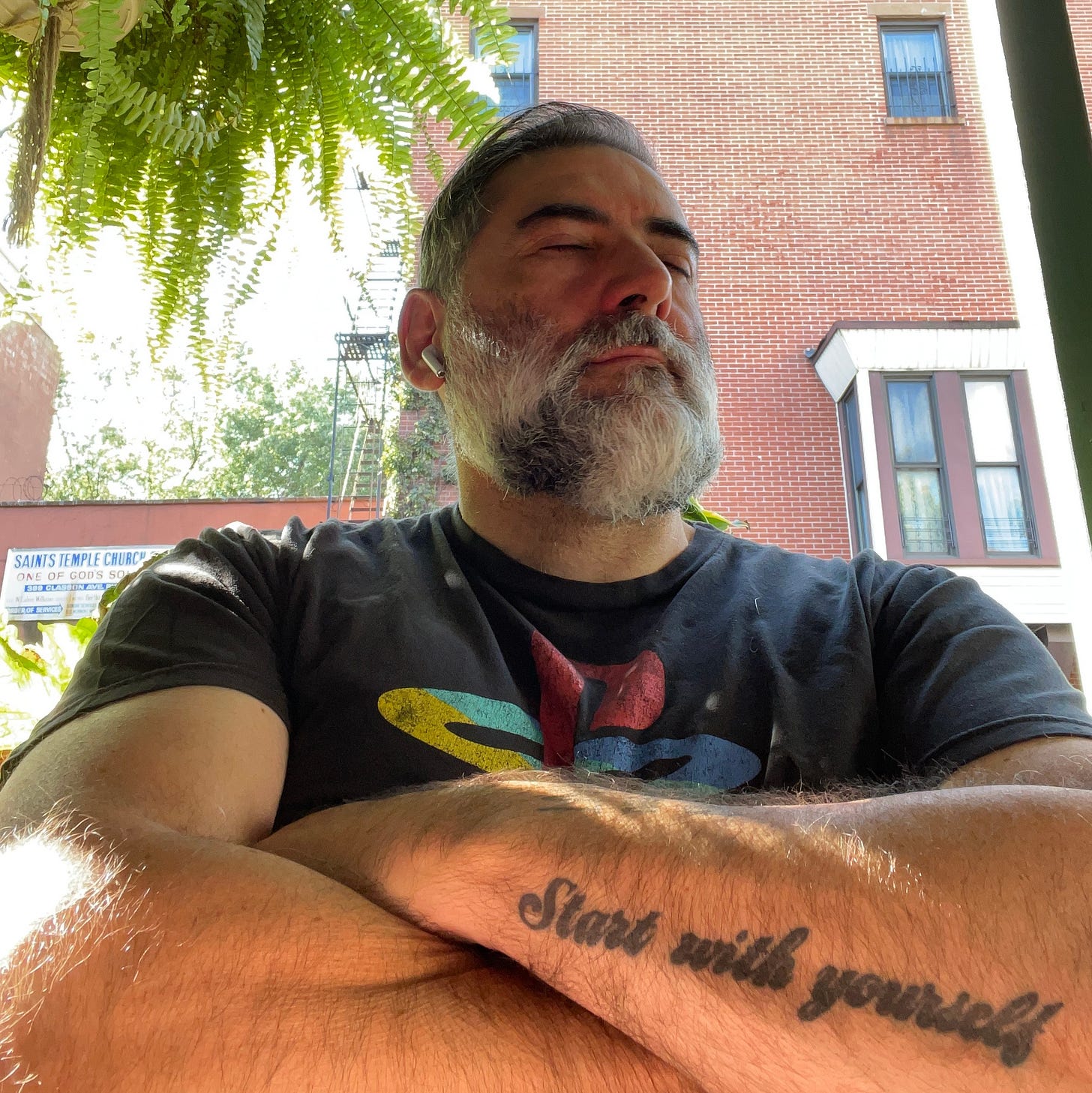Think With Purpose
How Thought Awareness Shapes Your Mood, Decisions, and Success
I'm Manuel Saez, helping design entrepreneurs master emotional intelligence and leadership to grow thriving businesses 🌻 EQ Coach, 2X-Founder & Award-Winning Designer ➜ Lover of Old Motorcycles 🛵🏍️
Reading time: 6 min.
Contents:
The Power of Awareness Over Thoughts
Two Ways to Handle the Same Situation
The Negative Spiral We Create in Our Heads
The Psychology of Thought Propagation
Why This Matters for Founders and Entrepreneurs
A Personal Note
The Power of Awareness Over Thoughts
Thoughts multiply. They spread and expand like wildfire in our minds when we’re not paying attention.
Sometimes, it’s a slow burn—an irritation that smolders until it becomes resentment. Other times, it’s a flash fire, triggered by a moment of anger or self-doubt.
But here’s the thing: we have the power to control what lives in our heads.
I’ve learned this through experience—and a lot of trial and error. Thoughts can shape our emotions, which in turn shape our actions.
If we can notice when a line of thinking is leading us down a destructive path, we can stop and make a conscious choice to shift it. It’s not always easy, but it’s incredibly empowering.
My dad used to say:
“Inside my head, I control. Outside, not so much.”
He understood something fundamental: while the world outside can be chaotic and unpredictable, our inner world doesn’t have to be.
When we forget this, though, thoughts can spiral, and one negative idea leads to another, pulling us deeper into anger, sadness, or resentment.
Bad thoughts lead to more bad thoughts.
Good thoughts lead to more good thoughts.
The choice is ours.
Two Ways to Handle the Same Situation
Let me tell you about a moment that still sticks with me. I was driving one day when another car cut me off—blatantly rude, no doubt about it.
My first thought was: “What an ass.” I could’ve left it there, but instead, my mind took the reins.
Suddenly, I’m imagining teaching him a lesson. Maybe I’d speed past him, cut him off, force him to stop, and then confront him.
I’d tell him exactly what I thought of his driving, and if he didn’t apologize…well, you get the picture.
By the time I snapped out of it, my palms were sweaty, my shoulders tense, and I was gripping the steering wheel with pure rage.
But there was another way I could’ve handled it.
The same car cuts me off, and I think, “What an ass,” but then I stop myself. Maybe he’s running late, I tell myself. Maybe he’s having a bad day.
Then I let it go and start thinking about something else—like the guitar I planned to play when I got home.
The outcome? In one version, I’m fuming and distracted, carrying that angry energy with me for hours.
On the other, I’ve moved on, staying calm and focused on what actually matters.
I know staying cool in the heat of the moment isn’t easy. But we all have a spark of awareness in those moments—that split second where we can choose which path to take.
True wisdom is learning to make the right decision when it matters the most.
The Negative Spiral We Create in Our Heads
We don’t just get stuck in these loops when someone else wrongs us; we do it to ourselves too.
I’ve caught myself spiraling into self-doubt after a mistake: “Why did I mess that up? I’m lazy, I’m not good enough, I’ll never figure this out.” Sound familiar?
These moments can be particularly toxic because the person you’re beating up on is you.
But here’s a trick that’s helped me: when you realize you’re in that loop, stop and argue the other side.
Maybe it wasn’t a mistake.
Maybe you did the best you could with the information you had.
Maybe this setback is part of a bigger lesson you haven’t uncovered yet.
I’m not saying to justify every action or avoid accountability. I’m saying that when your thoughts are overly critical, you need balance.
Ask yourself: “What’s the other side of this story?” More often than not, you’ll find it’s not as bad as your mind made it out to be.
The Psychology of Thought Propagation
So why do thoughts spiral like this? It turns out our brains are wired to reinforce patterns.
This is known as the “thought-action tendency,” a concept in psychology that explains how certain emotions and thought patterns prepare us for specific actions.
Feeling anger, for example, primes us for confrontation, while self-doubt can make us retreat.
When we dwell on negative thoughts, our brain strengthens the neural pathways associated with those emotions, making it easier to revisit them in the future.
The good news? The opposite is also true.
By consciously redirecting our thoughts—by thinking with purpose—we can train our brains to favor more constructive, empowering patterns over time.
This pattern of thought propagation also highlights the importance of self-awareness.
Often, we don’t even realize when our minds are stuck in these loops, replaying the same negative scenarios.
By simply noticing when it’s happening, we create a small but powerful gap between the thought and our reaction to it.
That gap is where change begins. It’s in that moment of awareness that we can decide whether to keep fueling the spiral or to pivot toward something more constructive.
This isn’t about suppressing feelings—it’s about taking ownership of the narrative in your head before it takes ownership of you.
Practical Tips to Stop Negative Thoughts in Their Tracks
Here are a few techniques I’ve found helpful when dealing with runaway thoughts:
Pause, Acknowledge & Accept
When you notice a negative thought, don’t ignore it. Acknowledge its presence without judgment and accept it.
Challenge the Thought
Ask yourself: “Is this true? What evidence do I have to support or refute this thought?”
Replace the Thought
Swap out the negative thought with a more positive or neutral one.
Engage in a Grounding Activity
Redirect your focus by doing something physical, like taking a walk, playing an instrument, or practicing deep breathing.
Practice Gratitude
Shift your perspective by listing a few things you’re grateful for at the moment.
Why This Matters for Founders and Entrepreneurs
As a founder, I’ve seen how thought patterns affect not just my mood but also the decisions I make and the kind of leader I am.
Our thoughts don’t exist in isolation—they shape how we react to challenges, how we treat others, and even how we see opportunities.
A negative thought left unchecked can spread into your outlook, influencing the way you interact with your team, customers, and stakeholders.
When negativity spirals, it can lead to hesitation, making you second-guess your decisions or avoid taking calculated risks.
You might find yourself becoming short-tempered or impatient, especially in high-pressure situations where clarity is essential.
Even worse, it can trigger self-doubt that paralyzes you, keeping you from taking the actions necessary to move your business forward.
Over time, this pattern doesn’t just slow progress—it erodes confidence and undermines your leadership.
On the flip side, fostering positive thought patterns builds resilience and adaptability, two critical traits for any entrepreneur.
When your mindset is constructive, you’re more likely to see challenges as opportunities rather than obstacles.
This shift in perspective not only helps you bounce back from setbacks faster but also enables you to lead with confidence and maintain a long-term focus on your goals.
Positive thinking isn’t about ignoring problems; it’s about approaching them with a clear head and a belief in your ability to navigate them effectively.
As founders, our mindset sets the tone for our teams. When we consciously cultivate healthier thought patterns, we create an environment where optimism and creativity thrive.
In turn, this helps us become the kind of leaders who inspire trust and resilience, both in ourselves and in those we lead.
A Personal Note
This isn’t about striving for constant positivity or pretending everything is fine when it’s not. It’s about recognizing that you have a choice.
When you catch your mind running wild, you can pause, take a breath, and decide where to go from there.
Thank you for reading. If this resonates with you, feel free to share it with someone who might need it. And if you’re looking for more ways to develop emotional resilience and clarity as a founder, send me a note—I’d love to help.
Sending you good vibes 🌻.
Manuel Saez





